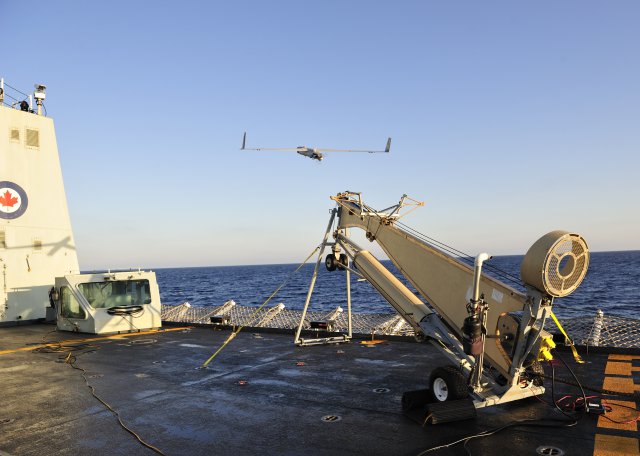 Launching its ScanEagle unmanned aircraft from Oliktok Point at the North Slope of Alaska, Insitu conducted flight operations for the U.S. Coast Guard 13-15 July. The successful demonstration was part of the Coast Guard Research and Development Center’s Arctic Technology Evaluation 2015 Search and Rescue exercise (SAREX 2015).
Launching its ScanEagle unmanned aircraft from Oliktok Point at the North Slope of Alaska, Insitu conducted flight operations for the U.S. Coast Guard 13-15 July. The successful demonstration was part of the Coast Guard Research and Development Center’s Arctic Technology Evaluation 2015 Search and Rescue exercise (SAREX 2015).
This event was designed to evaluate unmanned technologies in remote area Search and Rescue (SAR) and simulate a collaborative response effort between government and industry entities to an offshore emergency. Other participants included ConocoPhillips, Era Helicopters, the Department of Energy, the Federal Aviation Administration and the North Slope Borough.
ScanEagle demonstrated Beyond Line of Sight (BLOS) hub-and-spoke capabilities, launching from the shore and handing off control of the aircraft to operators aboard the USCGC HEALY. In flight, the platform provided persistent overwatch, delivering real-time imagery and proving its ability to maximize USCG maritime assets that routinely conduct operations in extreme Arctic conditions. ScanEagle also demonstrated its potential for other operations such as marine mammal surveying and ice floe and ice ridge mapping.
“Federal, state, municipal, and private collaboration on the North Slope, where assets and resources are scarce, is vital to response mission success,” said Rich Hansen, Arctic Coordinator for the U.S. Coast Guard Research and Development Center (RDC). “The lessons learned from this joint exercise will help facilitate response efforts in the future as well as develop requirements, tactics, techniques, and procedures for unmanned technologies that could be leveraged for those responses in the Arctic environment. The Coast Guard is committed to advancing Arctic objectives and the RDC will continue to pursue projects and technologies that provide incremental improvements as well as those with the greatest potential to strategically transform the way the Coast Guard does business, especially in the Arctic.”
“We are excited to support our USCG and provide a solution that helps them better protect lives and detect threats to natural resources and national security interests,” said Insitu President and CEO Ryan M. Hartman. “This exercise demonstrates the value-added result of expanding the capability of unmanned systems into the civil arena.”
Insitu’s ScanEagle is a reliable, expeditionary, small footprint solution that delivers persistent imagery on land or at sea at a fraction of the cost of other intelligence, surveillance, and reconnaissance methods. In 2013, ScanEagle received the first restricted category type certification for small unmanned aircraft systems (UAS) from the Federal Aviation Administration, a milestone that helped further the FAA’s goal of integrating UAS into national airspace.
Insitu is an industry-leading provider of information for superior decision making. With offices in the U.S., U.K., and Australia, the company creates and supports unmanned systems and software technology that deliver end-to-end solutions for collecting, processing and understanding sensor data. We proudly serve the diverse needs of our global customers in the military, commercial and civil industries. To date, our systems have accumulated more than 838,000 operational flight hours and 104,000 sorties. Insitu is a wholly owned subsidiary of The Boeing Company.
Source: Press Release
